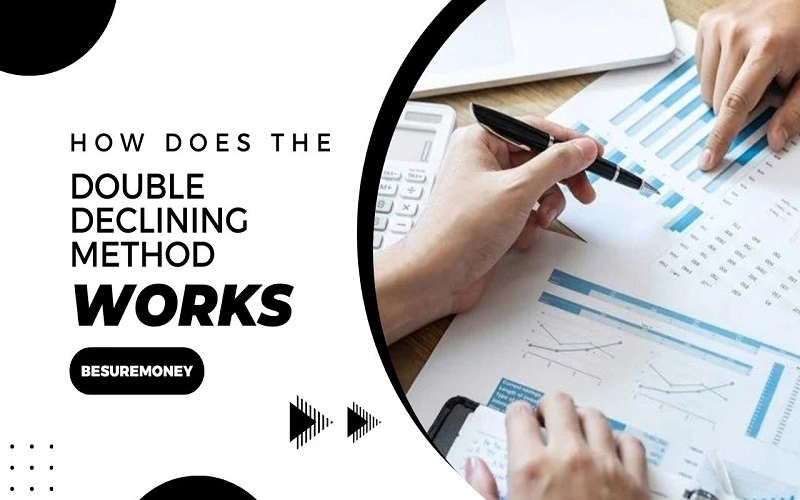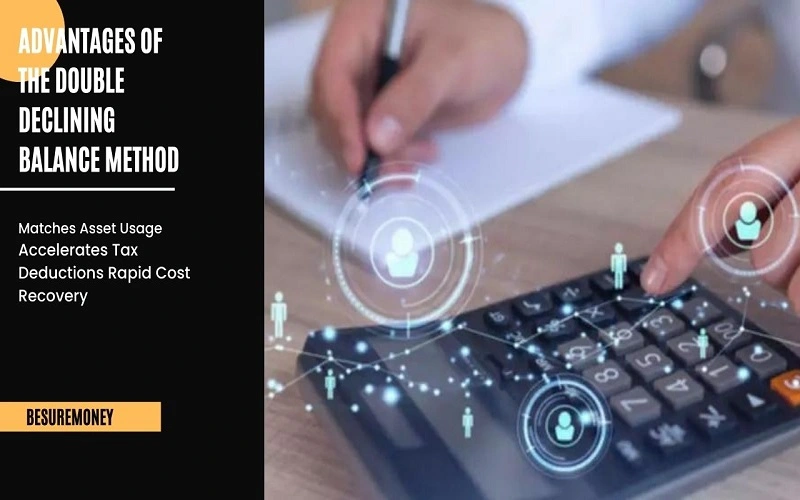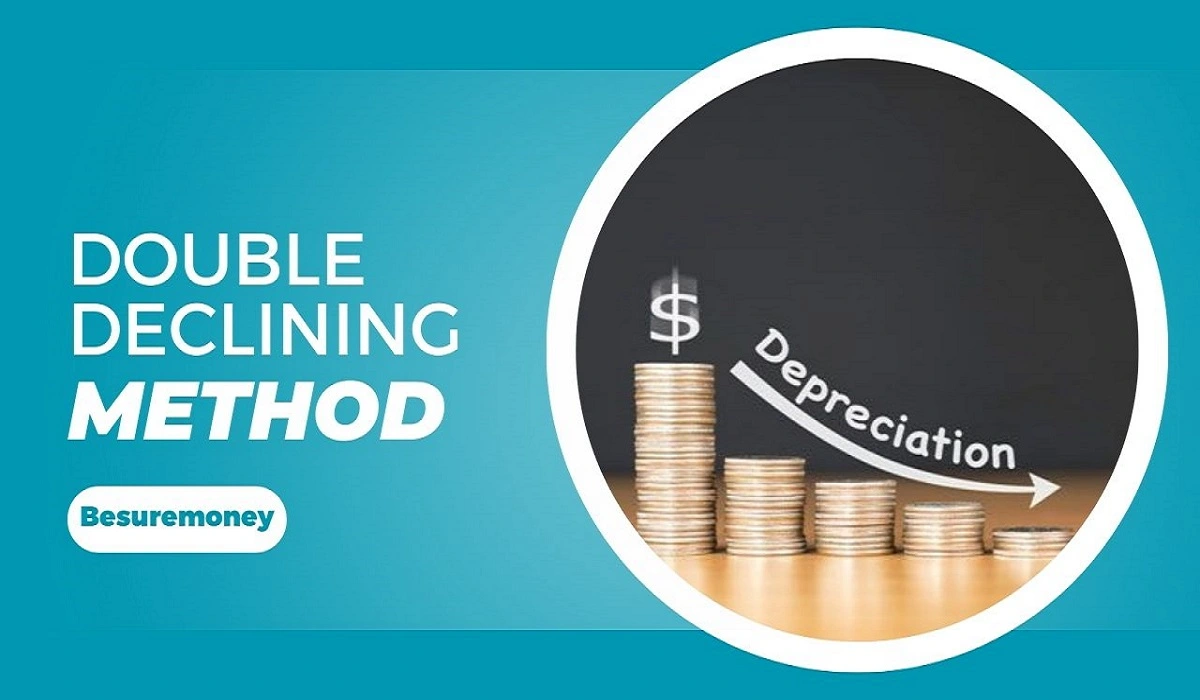Businesses see charges with their assets over time, such as tools or vans called depreciation. It also helps to show how the value of asset granularity is reduced each year. A double declining method is one of these possible techniques. It has separate posts about depreciation calculation because it focuses on accelerating when an asset is placed in service. This post detailed a double-declining balance process and a few reasons.
What is the double declining balance depreciation method?
Double declining balance Method (volume) is a type of depreciation, which you can use to write off more value from an asset earlier. The DDB is more of an accelerated over its life ( as opposed to evenly spreading the cost throughout it like in a straight line) Hence it can be termed as an accelerated method. The basic principle of the DDB techniques refers to how assets lose more value in their early years and then less as time passes, often because that is closer to how they work out functionally.
Resolution in business, refers to a formal decision made by the company’s leadership, either through Board of Director meetings or Shareholders’ Annual General Meetings. Clear resolutions ensure focus and informed flexibility for businesses to tackle challenges in 2024. DDB combined with potent resolutions assists in fostering a sharp financial discipline on the business side.
How Does the Double Declining Balance Method Work?

The double declining balance method uses a formula that defines an asset’s rate each year.
Depreciation expense = 2 * (straight line depreciation rate) * (book value at the starting of the year)
Here’s what each part means:
Straight-line Depreciation Rate:
The double declining balance method uses a formula that determines the decrease in depreciation of an asset each year. The formula is:
This is calculated by taking 1 divided by the years over which an asset will be useful. If the asset’s useful life is 5 years then the straight-line rate is 1/5 or 20%.
Net Asset:
This is the value of the asset, minus any taken in previous years at its beginning-of-the-year book value. In a double declining balance, you multiply the straight-line rate by to “accelerate” (more of it happens in earlier years). Each year, we repeat the calculation above but use the new book value until it has either reached its salvage or is full.
Step-by-Step Example of Double Declining Balance Calculation
Let’s take an example to understand how the double declining balance method works. For example, let’s say an organization purchases equipment for $10,000 with no value and a life of 5 years.
Step 1: Determine the Straight Line Depreciation Rate = 1 / 5 = 20%
Step 2: Straight-Line Rate times by 2, to obtain a Double-Declining Rate = 20% *2=40%
Step 3: Use the Formula for One Year
Depreciation in Year 1 = 40% × $10,000= $40,000
The book value at the end of the year is $6000
Step 4: Depreciation in 2 Year = 40% x $6,000 =$2,400
Closing book value at the end of year two is equal to $6000 -‐$2400 =$3,600
Advantages of the Double Declining Balance Method

Advantages associated with the double declining balance (DDB) method.
Matches Asset Usage:
For machines or technology assets, the drop-in value is greater in initial years The DDB method reflects this by treating it as front-loaded and matching the way an asset is used.
Accelerates Tax Deductions:
Businesses can lower their taxable income sooner by deducting more decline in the early years, boosting cash flow.
Rapid Cost Recovery:
This approach recovers the costs invested in assets much faster and this is crucial since you will have more money to reinvest or make your business grow. In the end, DDB is for businesses that have assets that rapidly or want to realize tax benefits sooner rather than later.
Disadvantages of the Double Declining Balance Method
The double declining balance method offers advantages, but there are drawbacks as well.
Not Recommended for Depreciating Assets:
The DDB method is not good when you need the assets to decline in value equally over time, such as buildings or furnishings. When it comes to such cases, the straight-line method may be preferable.
Decreasing Depreciation in Later Years:
As the DDB approach accelerates depreciation from earlier decades, the total quantity written down decreases yearly. This may be at odds with how some of these assets (especially the long-term ones) will look later in their life cycle.
More Complicated:
The DDB method is more complex to calculate than simpler methods such as straight-line depreciation. This can be more effort for bookkeeping.
Comparison with Other Depreciation Methods

Depreciation can be calculated in so many ways, and one of them is the DDB method. Here’s how it compares:
Straight-line method:
This is the easiest one as depreciation is divided by the now of years. It is easier to calculate, but may not reflect more recent changes in an asset´s value.
Units of Production Method:
It measures the devaluation based on how much asset has been used. It’s best for machines or equipment that decrease in value over time as they are used, but it is more complicated than the straight-line method.
The Sum of the Years Digits Method:
Another one of an accelerated depreciation method, similar to dB but spreads out the retirement expense over a longer timeline. Each of these methods has its advantages and is well-matched to particular classes of assets. The DDB approach is best for resources that deteriorate quickly or if a business attempts to diminish its charge.
Which condition is used in the double declining balance method?
The double declining balance method is ideal for:
Rapid Asset Depreciation:
If your business has assets that devalue quickly, or equipment is technological and loses value rapidly within the early years of operation then the DDB method may be a good fit.
Take Advantage of Tax Benefits:
Because depreciation under the DDB method is computed at a higher rate in early years, it can lower taxable income for several initial years, allowing businesses to use cash flow more efficiently or re-invest straight away.
Industries with Fast-Changing Technology:
Businesses in industries such as electronics, software, or manufacturing may also find the DDB method helpful since their assets often depreciate quickly.
Conclusion:
Double declining balance depreciation is used for companies that need to depreciate assets more quickly and the asset will rapidly lose its value. That helps correlate depreciation to the asset’s actual usage, ensures that tax breaks are front-loaded, and allows considerably faster recovery of costs based on taxes. It might not be the best for all cases but it is an excellent choice of investment in certain industries, especially when you must invest in assets that lose value rapidly. By knowing when and how to utilize this procedure, companies are allowed to make more strategic financial transactions leading them towards a correct accounting process.
FAQs:
Q1. What is the easiest method of depreciation?
Ans: Straight-line depreciation is the most straightforward way to depreciate. Simple, in that it arbitrarily divides the cost of an asset over its useful life. Each year, you deduct the same amount of depreciation. This method is easy to calculate and works well for assets that wear out or lose value at a steady rate, like buildings or furniture.
Q2. What is the most aggressive method of depreciation?
Ans: The double declining balance method will depreciate the cost of an asset much faster than those methods above. This way of doing things simply writes off more of the value in those first few years that an asset is operational since you recognize much greater amounts from year to year. It’s called aggressive because it accelerates how quickly the asset is depreciated instead of a straight-line depreciation which spreads it out over time. The DDB method is typically employed for assets that quickly lose value, like technology or heavy machinery.
Q3. Which asset cannot be depreciated indeed?
Ans: An asset that cannot be depreciated island. Buildings or equipment depreciate over time, but land does not because it is a fixed resource and tends to gain in value due to what can be done on that piece of real estate such as location and development opportunities. However, to the extent that land has intrinsic value in real estate even with market conditions affecting its prices, all things being equal and long-term period it keeps or increases its value.
Q4. What asset never loses value?
Ans: An asset that generally never loses value is land. Unlike buildings or equipment that wear out over time, land doesn’t depreciate because it’s a finite resource, and its value often increases due to factors like location, development, or demand. While market conditions can affect land prices, they typically retain or grow in value over the long term.
Q5. What is the 7-year property for depreciation?
Ans: The IRS uses 7-year property for assets with a depreciable life of seven years. Compared to what I thought, it is mostly office furniture fixings and fitting or plant machinery. To spread the cost of these assets out through 7 years, businesses use a common path to depreciation. This leaves companies with options of over a straight-line or double declining balance for an accelerated method.
